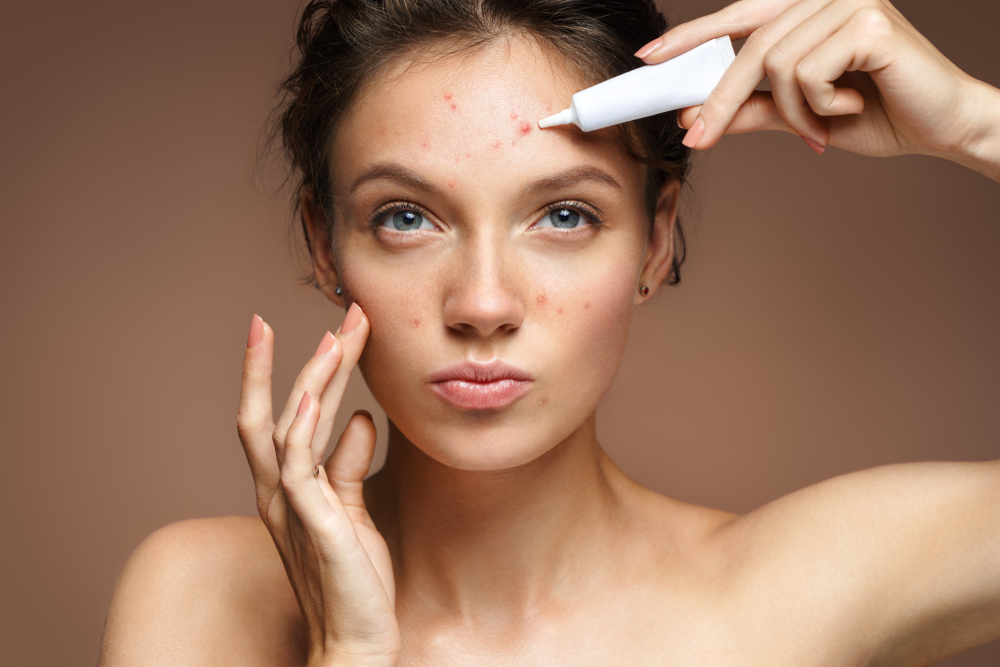Different Types Of Skin Infections And Their Effective Treatments
Different types of skin infections and their effective treatments
Skin infections are caused by microorganisms and skin parasites. They cause itching, rashes, sores, and blisters. Different types of skin infections can affect different parts of the body. A large percentage of skin infections are bacterial, but there are numerous types of fungal and viral infections too.
Skin infection types
Skin infections can be categorized in many ways, by causes, age group it affects and so on. However, identifying the cause of the infection is most important to plan the proper treatment. Therefore, skin infections can be classified into bacterial, fungal, and viral infections.

Bacterial skin infections
The human skin is host to a lot of microorganisms, especially bacteria. Many of these are beneficial and perform useful functions. However, if some of these bacteria increase in number, or the skin is invaded by other harmful bacteria, it can cause infections. Common bacterial skin infections include Leprosy, Staph Infection, Carbuncles, Impetigo, and Cellulitis.
- Fungal Skin Infections
Fungal infections are also very common. These include Athlete’s foot, candidiasis or yeast infection, fungal nail infections, ringworms, and sporotrichosis. - Viral skin infections
Viral infections are hard to cure because a virus is a very tiny microorganism that lives inside a host cell, that is inside human cells which act as the host to the virus.
External and Internal Skin Infections
Most skin infections appear on the outer layer of the skin and are therefore very obvious. These include acne, warts, fingernail infections, Athlete’s Foot, measles, chicken pox, impetigo, and cellulitis.
- Acne
Acne is a common skin infection triggered by hormonal changes. This affects the functioning of the sebaceous glands that produce the oil in the skin called sebum. Sebum in normal levels is beneficial, it keeps the skin soft, smooth, hydrated and supple. However, hormone imbalances can cause the overproduction of sebum. An increase in sebum can cause this body oil to block pores and cause dead cells to collect in them. This is an ideal condition for bacterial growth and infection. This causes an acne breakout in the forms of pustules, cysts, and papules. - Fungal nail infection
This fungal infection usually affects toenails. It causes a scaly flaking on the nail and eventually causes the nail to crumble. This is treated with antifungal creams. - Warts
While warts can appear anywhere on the body, they generally affect hands, feet, and joints. They are caused by the human papillomavirus and are contagious. - Ringworms
This skin infection is caused by a fungus called dermatophyte. - Athlete’s Foot
This feet problem is caused by a fungus that grows in moist and damp environments, like when your feet stay inside athletic shoes for a long time. It can affect anyone, not just athletes. - Candidiasis
This is caused by an increase in the number of the candida albicans fungus generally present in the body. This results in itchy red patches of skin generally in the armpits, groins and under folds of skin. - Measles and Chickenpox
These are viral diseases which commonly affect children. They usually occur once in a lifetime, as the body learns to recognize and effectively deal with the virus that causes these infections. - Shingles
Unfortunately, chickenpox can leave a lingering effect in the form of shingles. This infection is caused by the same virus that causes chickenpox, but unlike chickenpox, shingles can affect you multiple times through your lifetime.
Internal skin infections
These infections affect the lower layers of the skin. They include:
- Carbuncle
Caused by the Staphylococcus aureus bacteria, they take the form of a cluster of boils beneath the outer layer of the skin and affect hair follicles. They can become infected and inflamed causing pain and itching. Cleaning the affected area using antibacterial washes and taking antibiotics are usually effective treatments. - Cellulitis
This is a serious condition, it begins when bacteria enter the deeper layers of the skin through a cut in the top layer of the skin. It causes red, tender, painful bumps in the skin and can quickly spread. Severe cases of cellulitis can be life-threatening. This skin infection is treated with antibiotics. - Treatment for skin infections
Antiseptic, antifungal creams, corticosteroid creams, and other medications are used against various skin infections. Oral antibiotics, antifungal and antiviral medications are also used. However, viruses are very resistant to such treatments. Vaccinations are more effective as they help eradicate the smallpox viral infection.
Bacteria can be controlled using antibiotics, but new drug-resistant strains are beginning to appear. These include the Methicillin Resistant Staph Aureus (MRSA) bacteria that cause infections like Carbuncles. MRSA infections are treated with the patient being hospitalized to receive daily IV doses of Vancomycin. Recently, new long-acting antibiotic drugs have been developed, requiring just one shot every week to fight these infections.
Home remedies for skin infections
- Grind a few Margosa or neem leaves and mix this with water to create a paste. Apply this to the infected area, neem is a tried and tested antiseptic
- Tea Tree oil can also be used as a topical application to treat skin infections
- Apple cider vinegar and yogurt are good topical applications to use against fungal infections of the skin
- Crushed aloe vera leaf can be applied to skin infections to soothe and heal them. Aloe vera is a good antibiotic
- Turmeric is a most powerful antiseptic and antibiotic. It can be used to treat many infectious conditions
- Decoctions of echinacea, thyme, and calendula can also help treat skin infections
- Tomatoes contain an anti-inflammatory compound called lycopene that can soothe and heal wounds
- Crush some garlic cloves and apply this paste to the infected area to soothe and heal them
- Coconut oil has antibacterial and antifungal properties. Apply coconut oil or coconut oil mixed with a small amount of cinnamon oil to control skin infections.

